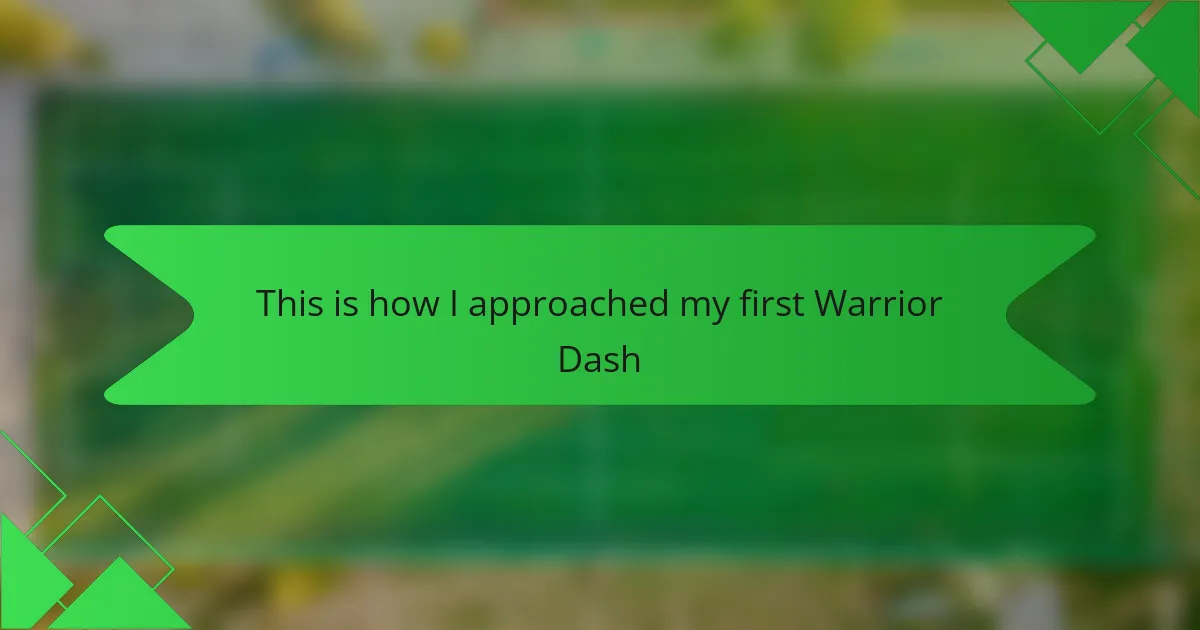Key takeaways
- Preparing for obstacle course racing involves both physical training and building mental confidence, focusing on manageable tasks.
- Essential gear, particularly proper footwear, can greatly improve performance and confidence during the race.
- Nutrition and hydration strategies are crucial; staying well-hydrated and choosing light, energizing foods can boost endurance.
- A positive mindset and the ability to embrace unexpected challenges can transform tough moments into enjoyable experiences.
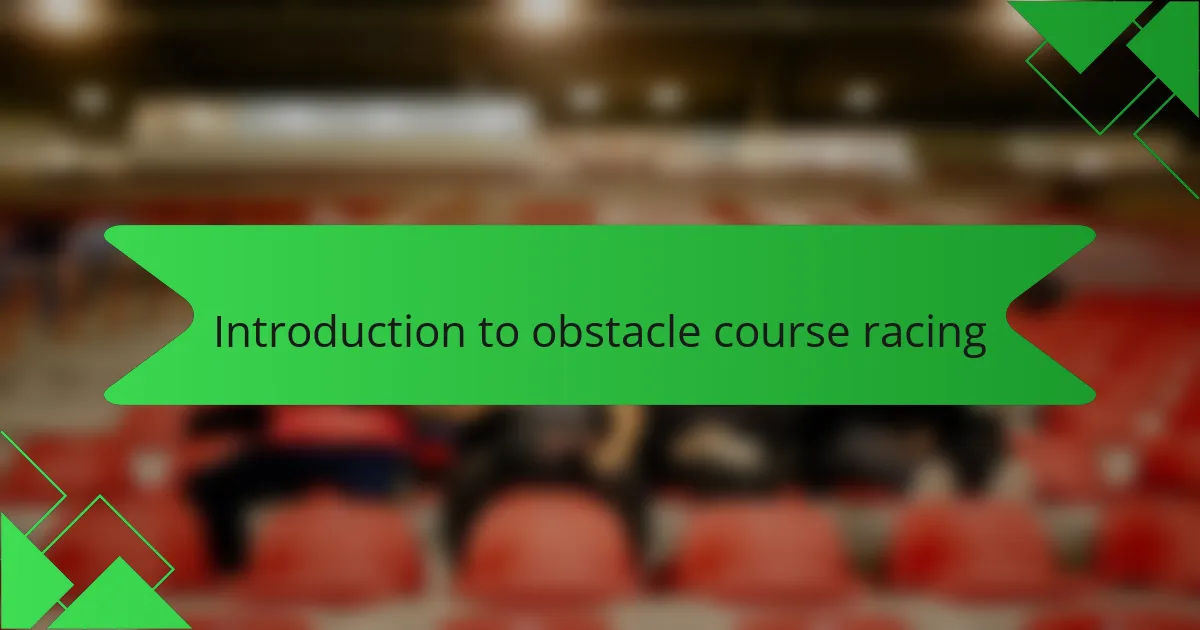
Introduction to obstacle course racing
Obstacle course racing, or OCR, mixes running with physical challenges like climbing and crawling. When I first tackled my Warrior Dash, I was both nervous and excited—never had I faced such a wild combination of sweat, mud, and determination. This sport pushes your limits but also rewards you with a huge sense of accomplishment.
| Aspect | Warrior Dash |
|---|---|
| Distance | Approx. 5K (3.1 miles) |
| Obstacles | 15-20 diverse challenges including mud pits, walls, and rope climbs |
| Terrain | Off-road trails with natural and man-made obstacles |
| Atmosphere | High-energy, festive, with music and cheering crowds |
| Skill Level | Beginner-friendly but physically demanding |
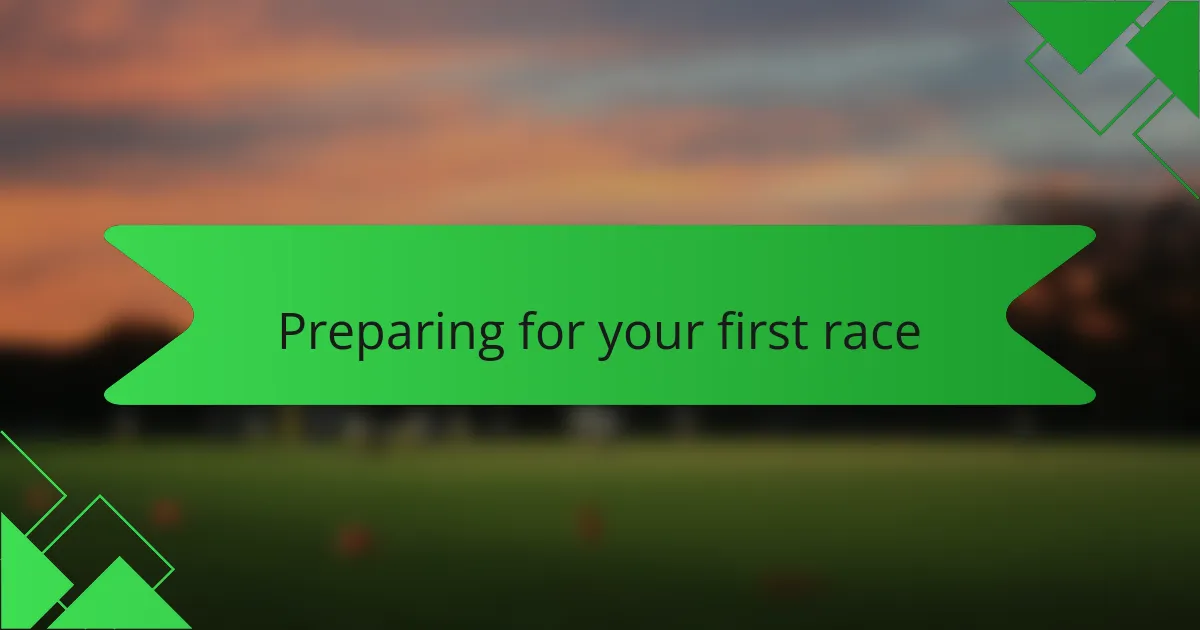
Preparing for your first race
Preparing for your first race meant more than just physical training for me; it was about building confidence to tackle the unknown. I vividly remember feeling a mix of excitement and nervousness as I planned my workouts and gear, knowing that each step was getting me closer to the wild challenge ahead.
From my experience, breaking down preparation into manageable tasks helped reduce overwhelm and kept me motivated. Here’s what worked best for me:
- Start with a balanced mix of running and strength training to build endurance and muscle resilience.
- Practice crawling, climbing, and jumping to get comfortable with common obstacles.
- Hydrate well and focus on nutrition to fuel your body effectively.
- Invest in proper footwear that offers good grip and support.
- Familiarize yourself with the course layout if possible to mentally prepare.
- Pack a small gear bag with essentials like gloves, a change of clothes, and energy snacks.
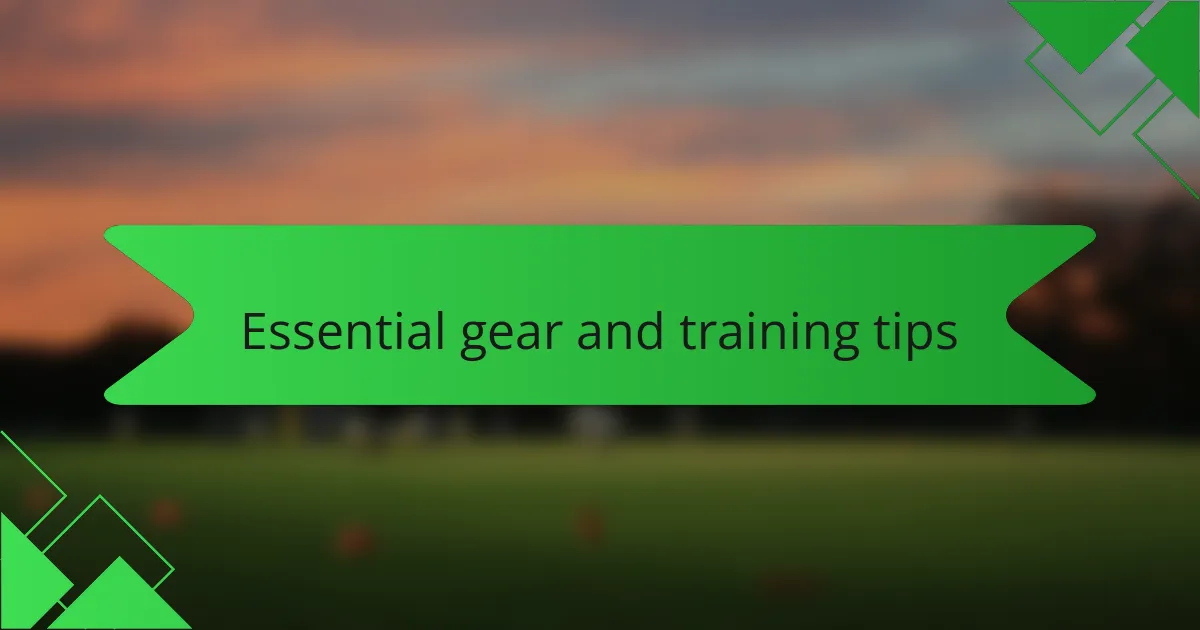
Essential gear and training tips
When I chose my gear, I quickly learned that shoes with solid traction made all the difference. Have you ever tried running through slippery mud in worn-out sneakers? Trust me, it’s an experience that sticks with you—literally. Investing in trail shoes with good grip kept me steady and confident on those uneven, muddy paths.
Training-wise, I focused a lot on functional movements—think crawling under nets and climbing rope ladders. It felt strange at first, like preparing for an obstacle I’d never seen, but practicing these skills made each challenge less intimidating on race day. Did I feel silly doing bear crawls in my backyard? Absolutely. But it paid off big time.
One thing I didn’t anticipate was how much upper-body strength counts. Running is one thing, but hoisting yourself over walls requires different muscles. So, I added pull-ups and push-ups to my routine. It was tough at first, but building that strength gave me a huge boost in confidence. When you can look at an obstacle and know you’ve already conquered it in training, the race becomes way less scary.

Nutrition and hydration strategies
Hydration was a game-changer for me. I learned the hard way that waiting until I felt thirsty wasn’t enough—by then, my body was already lagging behind. So, I made it a habit to sip water regularly, even during short breaks, which kept my energy steady and spirits high throughout the course.
When it came to nutrition, I kept things simple but effective. I focused on carbs like bananas and energy bars before the race to top off my fuel tank, along with a light breakfast that wouldn’t weigh me down. Have you ever tried running on a full stomach? It’s no fun, so finding that balance was key.
During the race, I avoided heavy snacks or sugary drinks, knowing they could cause a sudden energy crash. Instead, I relied on the momentum and a few electrolyte tablets to stay balanced. From my experience, this approach kept me feeling strong and ready to tackle every muddy wall and slippery slope without unwanted surprises.
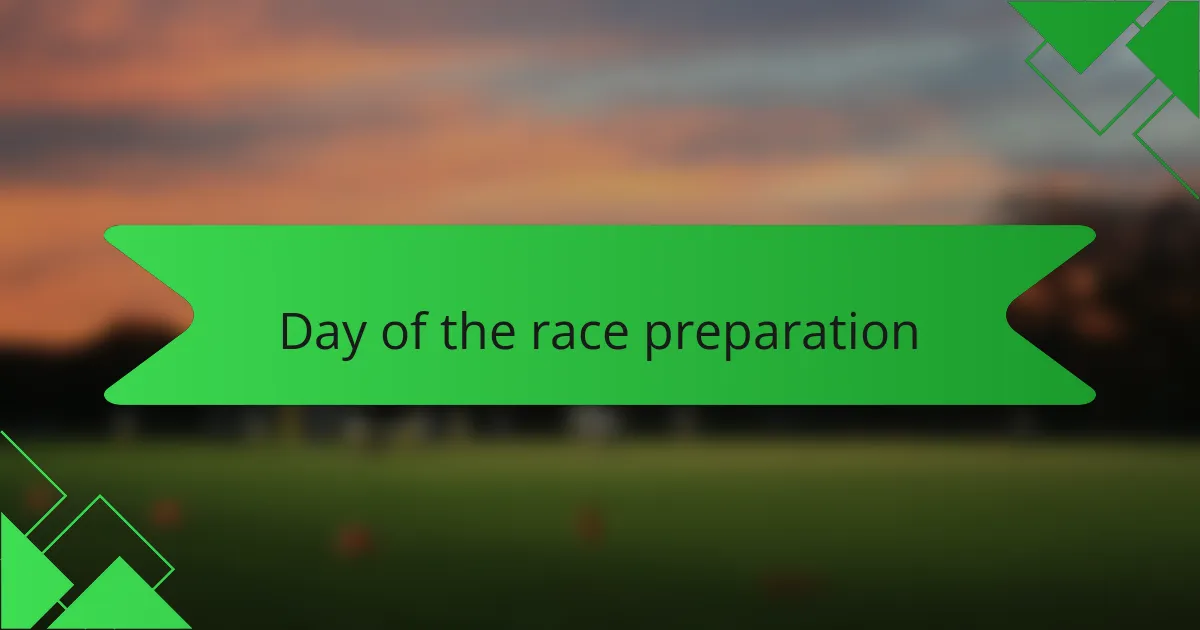
Day of the race preparation
On the day of my first Warrior Dash, I made sure to get a solid breakfast—something light but energizing. Hydration was a priority; I kept sipping water throughout the morning. I could feel a mix of nerves and excitement building up as race time approached, a feeling any first-timer will surely relate to.
| Preparation Aspect | My Approach |
|---|---|
| Breakfast | Oatmeal with banana for steady energy |
| Hydration | Frequent small sips of water all morning |
| Mental State | Balanced nerves with positive self-talk and visualization |

Tackling common obstacles
Tackling common obstacles was where the real challenge began for me. I quickly learned that brute strength alone wouldn’t cut it; technique and mental focus were just as crucial. For example, the rope climb initially felt impossible until I realized the importance of using my legs to push upward rather than relying solely on arm strength—this shift saved my energy and boosted my confidence.
From my experience, breaking down each obstacle into smaller, manageable steps made a huge difference. Instead of fixating on the entire course, I focused on nailing one element at a time, which kept my nerves in check and made the whole event feel less intimidating. Here’s a rundown of how I approached the key obstacles:
- Rope Climb: Used leg wrap technique to conserve arm strength
- Wall Hurdles: Took a step back for a running start to build momentum
- Mud Pits: Kept my body low and moved deliberately to avoid slipping
- Cargo Net: Climbed steadily while maintaining three points of contact at all times
- Balance Beams: Focused on a fixed point ahead to maintain balance and reduce wobble
Each tactic helped transform moments of doubt into small victories, which kept me motivated throughout the race.

Reflections and lessons learned from my race
Looking back, I realize how much this race taught me about pacing myself—not just physically, but mentally. Have you ever felt overwhelmed by a tough challenge and just wanted to rush through it? I did, and it almost backfired. Slowing down and focusing on one obstacle at a time helped me stay calm and actually enjoy the experience.
One key lesson was just how important mindset is. When I faced that muddy crawl, I remember thinking, “I can do this,” even when every muscle screamed otherwise. That positive headspace turned exhaustion into determination, and determination into crossing the finish line with a grin.
Finally, I learned to embrace the unexpected. Mud, sweat, and stumbles were part of the fun—not setbacks. This race reminded me that sometimes, the best victories come from adapting and laughing through the mess. Have you ever found that embracing imperfection made your challenges feel lighter? That was definitely true for me on the Warrior Dash.
